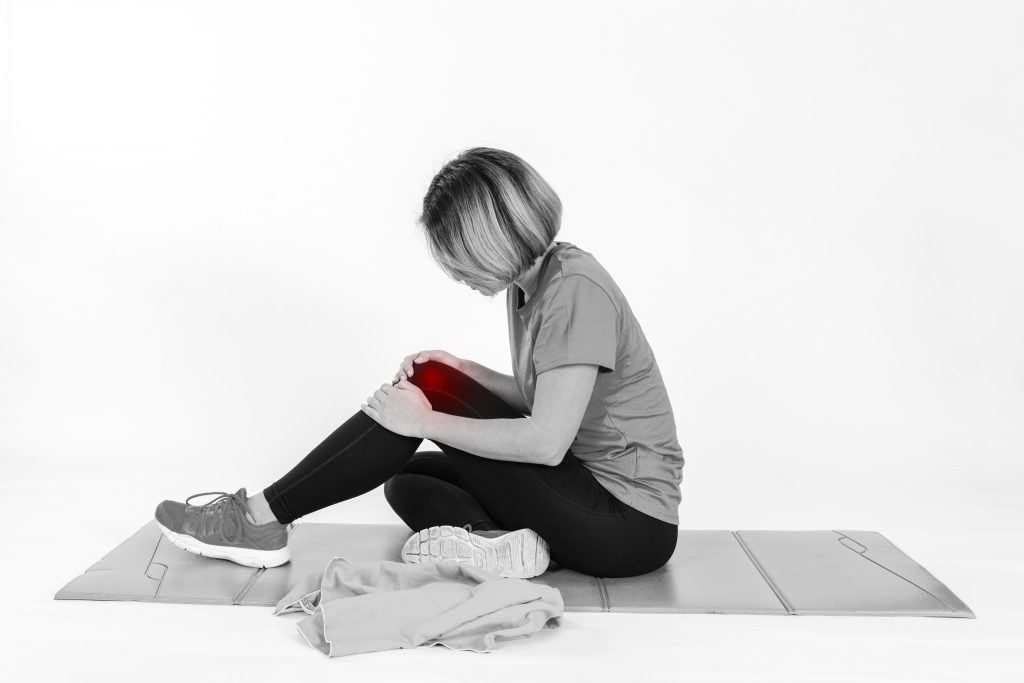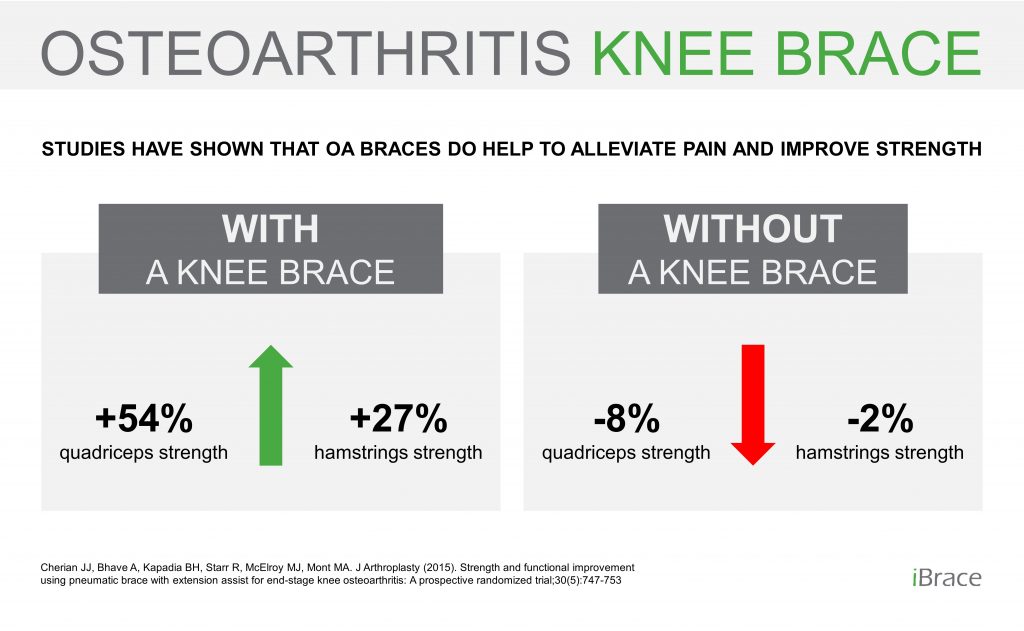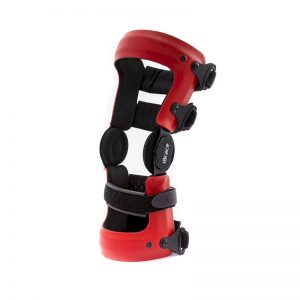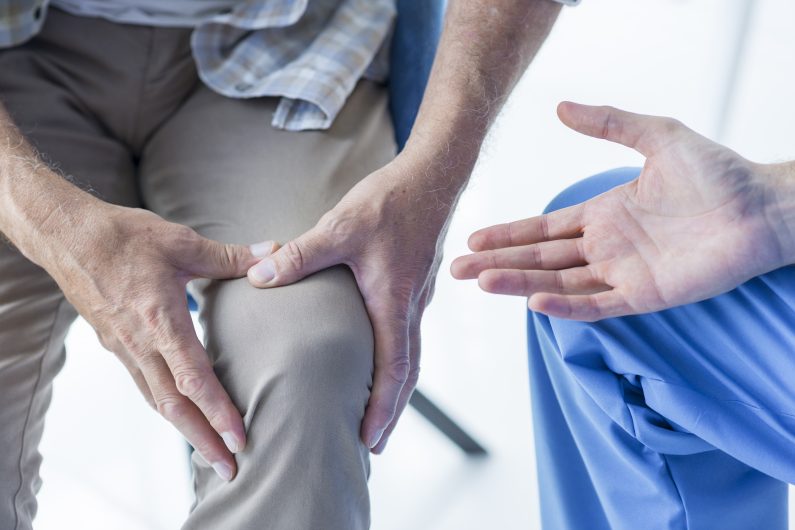One in 6 Canadians has knee osteoarthritis (OA) . A custom knee brace can go a long way in relieving pain and restoring patient mobility.
Knee Osteoarthritis: Definition
Osteoarthritis is a degenerative disease that affects joints such as the fingers, hips and knees. A healthy knee contains Synovial fluid. This viscous liquid has the utility of lubricating the joint and absorbing shocks during movement. When a patient has knee osteoarthritis, there is an alteration in the joint structures and changes in the composition of the synovial fluid as well as a gradual wear and tear of the cartilage. These factors cause a great decrease in the flexibility of the knee, a feeling of friction and swelling. Which brings knee pain to the patient.
Typical symptoms of knee osteoarthritis
In general, people with osteoarthritis may experience:
- Joint stiffness especially in the morning when getting up or after a long rest period
- Localized pain (increased when walking or on the stairs)
- Joint swelling and the appearance of bone growths
- Decreased range of motion
- A feeling of instability when walking
These symptoms can appear gradually, or even intermittently. Then, worsen in duration or intensity depending on the progression of the disease. We must also consider the repercussions that osteoarthritis can have on patients lives, such as fear of disability and mobility problems.
Risk factors for knee osteoarthritis
Since the knee is a highly stressed joint and is under great stress, several causes can lead to knee osteoarthritis. Some reasons are inevitable and cannot hardly be changed. These include age, gender, family history or injuries.
Other factors are modifiable such as body weight, poor alignment of the lower limbs, excessive or abnormal movement of the joint, or other joint stress.

Knee osteoarthritis in Canada and around the world
Knee osteoarthritis is the most common form of arthritis in Canada, affecting more Canadians than any other form of arthritis. More than 5 million Canadians are believed to have knee osteoarthritis, which is one in six *. Of this number, 40% of people have pain associated with their knee osteoarthritis.
The World Health Organization recognizes osteoarthritis as one of the ten most common disabling diseases in developed countries.
- Difficulties in carrying out their trades and carrying out their daily activities affect 25% of people with osteoarthritis **
- It is estimated that nearly 130 million people worldwide will suffer from it by 2050.
- Of this number, 40 million they will be severely handicapped by the disease. **
- These figures are caused by the aging of the population and the increasing obesity in the world.
** World Health Organization (WHO), Medical devices, how to solve the equation, Switzerland, 2012
How to diagnose osteoarthritis of the knee?

Since there is no screening test to diagnose knee osteoarthritis, when symptoms appear, the best solution is to consult a doctor or an orthotist. The doctor will be able to confirm the diagnosis after a physical examination and x-rays.
However, it should be noted that sometimes the symptoms of osteoarthritis and the x-rays are not necessarily related. Early in the disease, x-rays may not show osteoarthritis to the same level as the patient’s symptoms and later may reveal more severe damage.
Knee brace: an effective solution
Assessment of an orthotist:
- Patient health questionnaire
- Biomechanical and postural analysis
- Assessment report and recommendations sent to the doctor
One study showed that orthopedic treatment was associated with an average 54% improvement in quadriceps strength and an average 27% gain in hamstring strength. In contrast, the cohort that received standard care had an average 8% loss of quadriceps strength and an average 2% loss in hamstring strength.

There are several types of knee brace from soft splints, to semi-rigid or rigid orthoses. The choice will be dictated by the severity of the osteoarthritis, the patient’s activities, and lifestyle. They may be intended to simply heat and compress at an inflammatory site. In other cases, they will seek to stabilize a joint deemed unstable. Finally, some rigid-frame knee brace will change the alignment of the knee to relieve the area affected by osteoarthritis.
It is important to know that some devices can be obtained without a prescription while for others, a doctor’s prescription will be necessary. Orthotists are there to help the patient make the right choice of knee brace, according to their lifestyle and needs.


Foot orthotics: the ideal complement to the knee brace
Foot orthotics , on the other hand, will play an important role in achieving better alignment of the lower limbs. They will stabilize the gait, provide better shock absorption, and reduce the pressure exerted by the ground on the knee during activity. It is with the help of orthopedic corrections, adequate arch support, and a selection of suitable materials that you can help the patient in the management of his knee osteoarthritis.

Although one in six people currently suffer from osteoarthritis in Canada, each case is unique and deserves to be managed with a comprehensive and personalized assessment. Do not hesitate to communicate well with your patient, to ask him questions to better determine the options available to him.
Orthotics will not reverse the course of osteoarthritis since the bone deterioration is permanent, but they will certainly allow them to continue to lead an active life.
Find the closest clinic and book an appointment.
